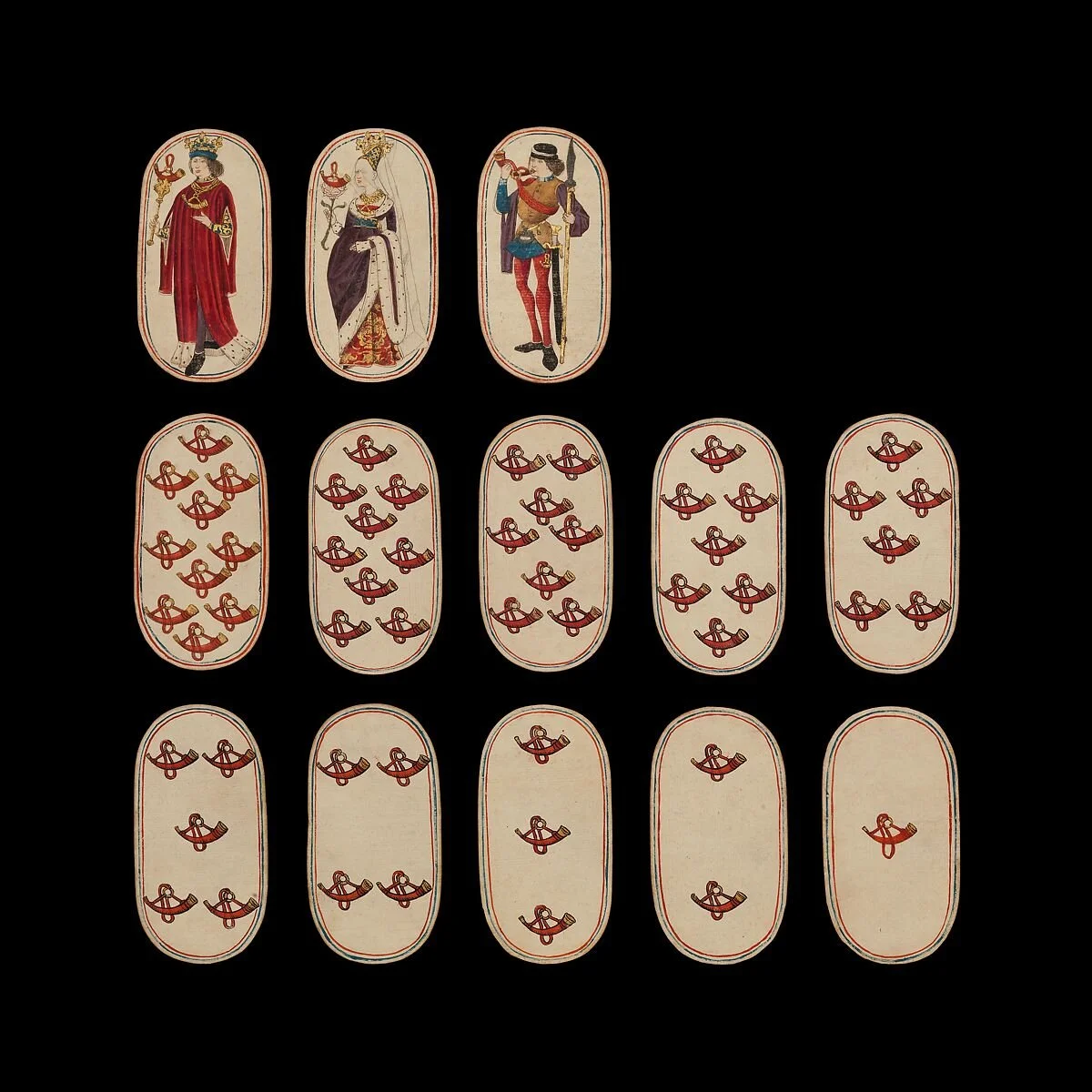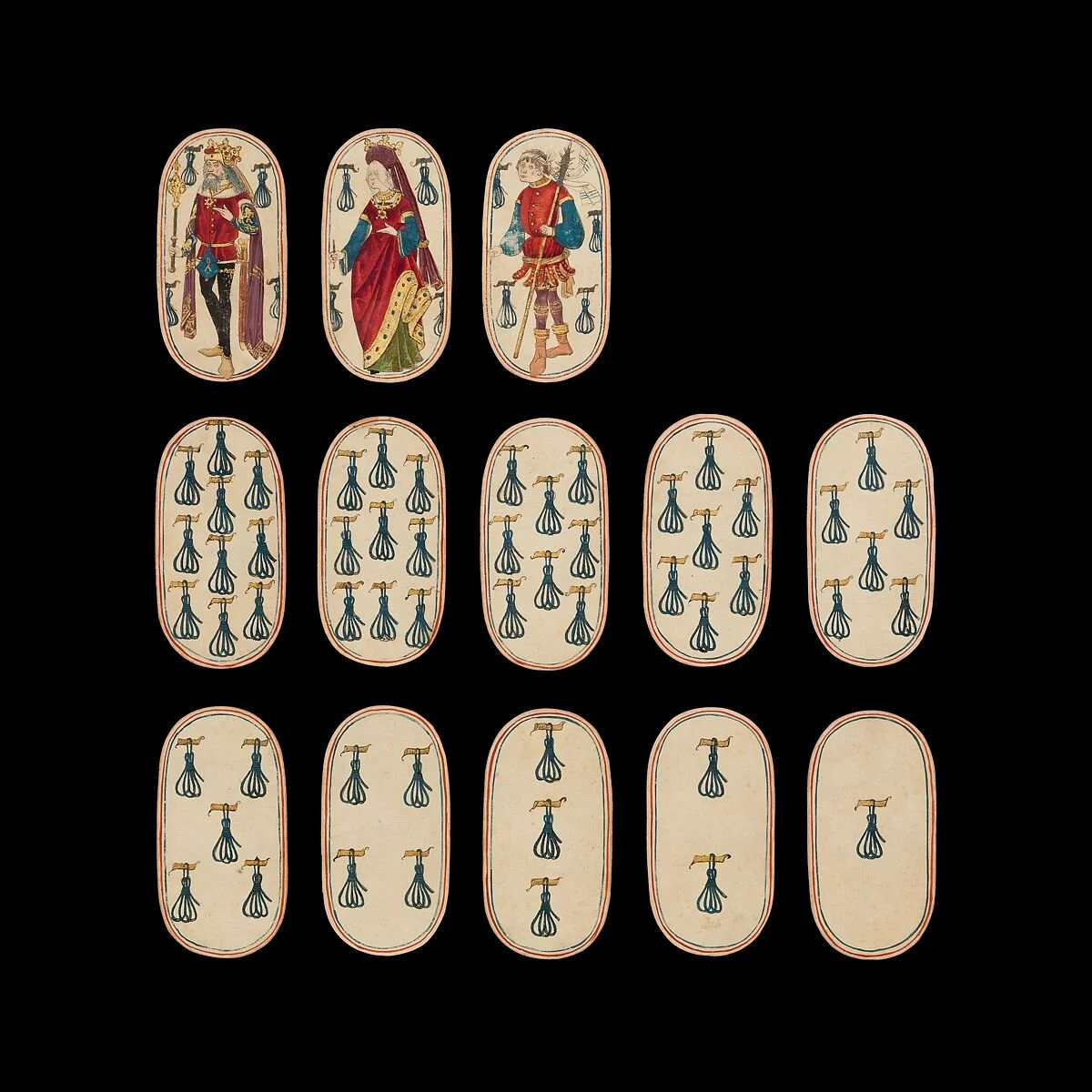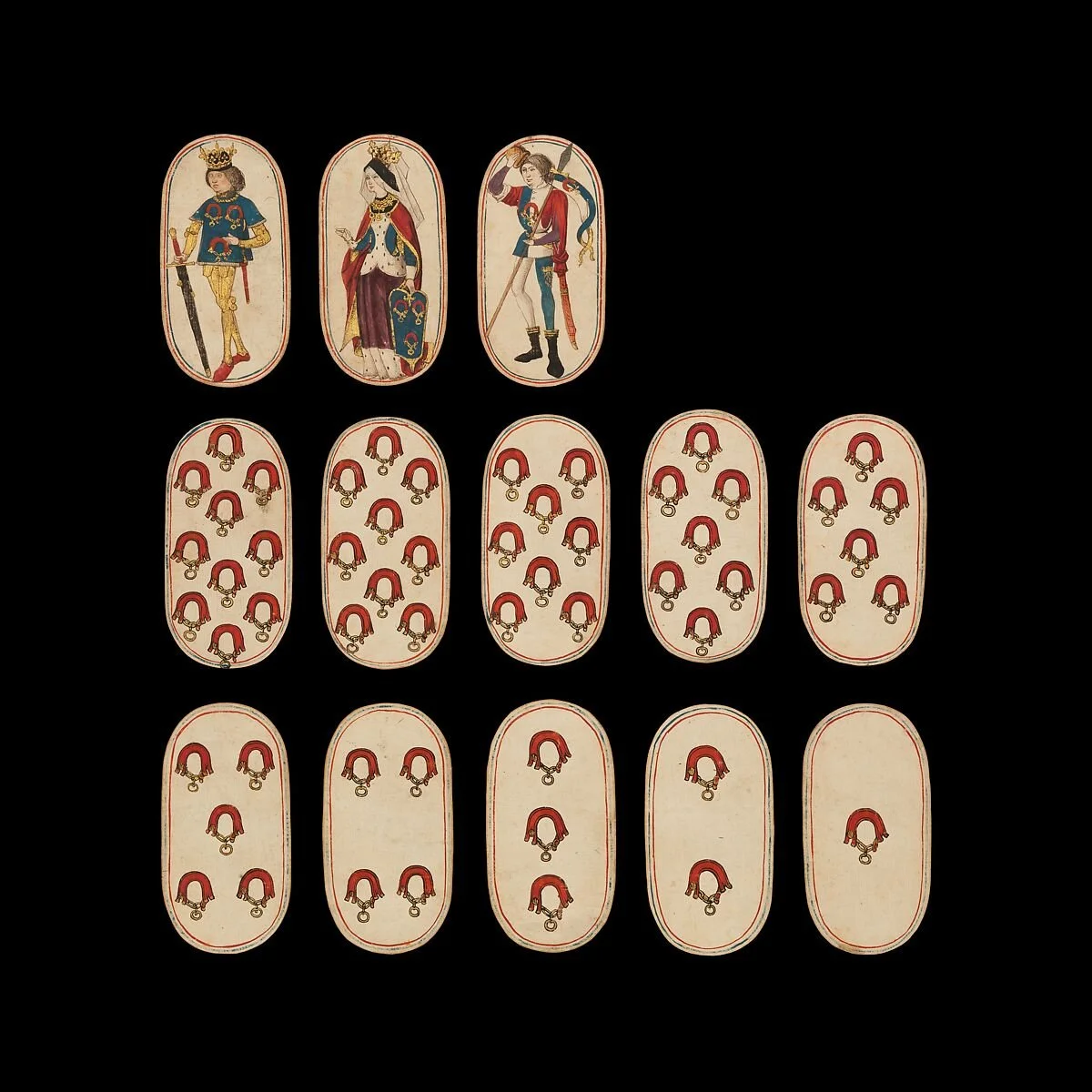The Deck of Many Things - Part 2
A while back, I penned an article about the Deck of Many Things and what I considered a money-making move by Wizards of the Coast (WotC).
I assumed that would be the end of the story.
However, as I continued my daily routine of indulging in random tidbits of information, I stumbled upon something fascinating: the Flemish Hunting Deck. It's a perfectly preserved historical example of what a deck of cards should truly look like, in stark contrast to what Wizards of the Coast has been pushing.
If you are DM or Player like me, this exquisite piece of craftsmanship in the Flemish Hunting Deck is a true gem. It's a testament to the artistry of the past, and it might just inspire you to opt for this authentic look instead of shelling out $60 on the latest Wizards of the Coast release.
Take a moment to savor the beauty and detail of these stunning cards – you won't be disappointed.
The Flemish Hunting Deck, also referred to as the Cloisters set of fifty-two playing cards and Hofjaren Jachtpakket in Dutch, holds a unique place in history as it represents the only complete set of ordinary playing cards from the 15th century. Estimated to have been manufactured between 1470 and 1480, these cards are currently housed at the Metropolitan Museum of Art in New York, USA.
These playing cards are remarkable examples of craftsmanship, featuring intricate hand-drawn and painted designs on pasteboard. Gold and silver accents enhance their beauty, employing techniques similar to those used in illuminated manuscripts of the time. Notably, these cards predate printed playing cards, which had already started to appear thanks to artists like the Master of the Playing Cards and others.
The deck consists of a full set of playing cards, including four suits with each featuring a king, queen, jack, and ten numbered pip cards. The suits are inspired by hunting items and depict game nooses, hound tethers, horns, and dog collars. The depicted figures showcase the fashion of the era, with short jackets, cropped hair, and pointed shoes.
These cards are believed to have been crafted in the Southern Netherlands, specifically Flanders, and are thought to have been made between 1470 and 1480. Research on the paper used for the cards suggests that it was created in or before 1450. The watermarks found on the cards provide further clues about their origin, with one watermark originating in France and eastern Flanders, in use between approximately 1464 and 1480, and the other watermark used in southern Flanders and the northern Lowlands between around 1468 and 1479.
Remarkably, the cards remain in excellent condition, indicating minimal or no usage. In 1978, the set was put up for auction at Hôtel Drouot in Paris, France, where it was mistakenly described as an incomplete set of tarot cards dating from the 16th century. Harrie Kenter, a Dutch antiques dealer from Amsterdam, purchased the set for 8,000 Dutch guilders, believing it to be an older artifact.
Kenter held onto the set for some time, even carrying it in his coat pocket while cycling through Amsterdam until his insurance company prohibited this practice. Realizing its historical value, Kenter decided to auction the set in 1983 at Sotheby's in London, where it was sold for an impressive U.S. $143,000. The Metropolitan Museum of Art acquired the set, and it now forms a part of The Cloisters collection.
So, if you're for cost-effective, genuine-looking, and historically precise cards for your game props, consider printing your own instead of purchasing them from Wizards of the Coast.






